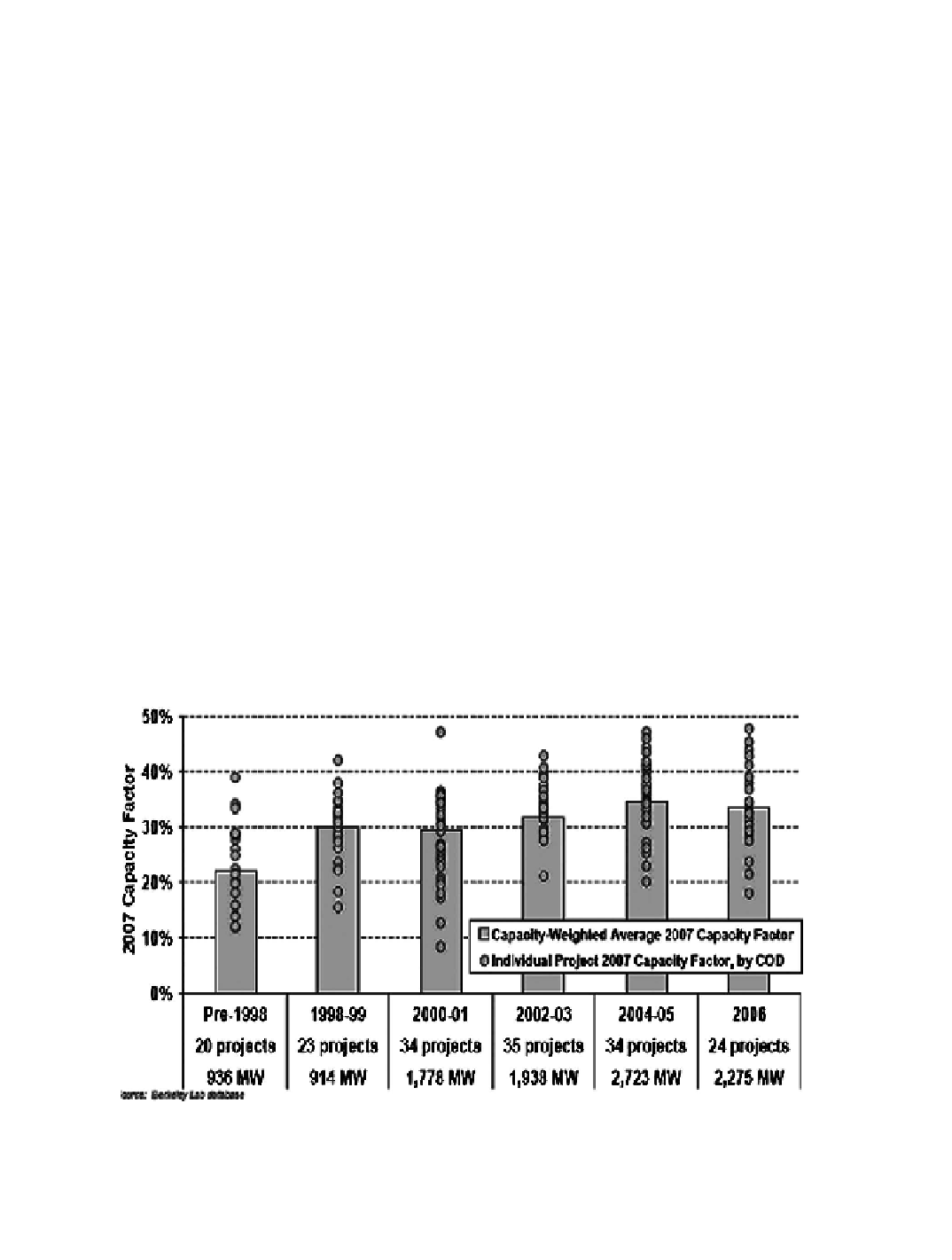Environmental Engineering Reference
In-Depth Information
Various
performance parameters
have been used to monitor and assess the net energy
production from individual wind turbines and complete wind power stations. Two of these
are
capacity factor
and
plant availability factor
, which are defined as follows:
Capacity Factor
: The ratio of actual net energy production to the product of the power
rating times the calendar time interval of interest expressed as a percentage.
Plant Availability Factor
: The ratio of actual time that the plant or individual turbines are
available for energy production regardless of the wind resource availability during the time
interval of interest.
Turbines installed since the early 990s have met or nearly met their performance goals,
as a result of
-
characterizing the wind resource with more accuracy
-
more thorough accounting for losses within the wind power station
-
significant upgrading of turbines by the power station operators
-
better maintenance scheduling and procedures
-
more accurate prototype performance testing by manufacturers of new turbines
Capacity Factor
Capacity factors for wind turbines vary widely as shown in Figure 4-36. Caution must
be used when comparing the capacity factors of different turbines because wind regimes vary
so much. Because energy capture is primarily a function of rotor diameter, turbines with
higher
rated power densities
(rated power per unit of swept area) will have lower capacity
factors than turbines with lower rated power densities at the same site. In 992 the average
capacity factor of California wind power stations was 8.5 percent, varying from a low of 2
percent to a high of 38 percent [Loyola 993].
Figure 4-36. Trend in capacity factors of wind power stations from before 998 through
2006.

Search WWH ::

Custom Search